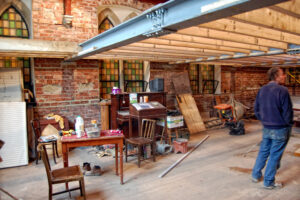Cleaning air naturally with a cash bonus
The focus on air quality and air pollution has undoubtedly increased over the last few years with governments – local and national – increasing penalties for polluters and providing blocks of funding for regions to develop strategies and solutions.
Whilst big ideas and strategies are essential we are yet to see affordable initiatives at the local level.
Aquaten has been developing and promoting a solution that can be used by individuals, businesses and organisations alike; what’s more, the solution is natural and aesthetically pleasing.
Aquaten Clean Green Screens incorporate natural vegetation (ivy screens) and a unique pollution capture system (Aquaten Clean fabric).
Ivy screens are highly effective in their ability to clean air from harmful pollutants and particulates, such as PM10s and 2.5s (Research by the University of Staffordshire).

Whilst the Aquaten clean fabric, which is derived from the same material used extensively in industrial protective face masks and clothing, is well proven to attract and neutralise noxious gases, such as ozone, benzene, phenol and VOCs.
Ozone has been identified as a gas that reduces lung function and increases the incidence of respiratory symptoms, respiratory hospital admissions and mortality.
By combining these two researched and proven methods of capturing noxious gases and particulate matter, Aquaten has developed a product that is a significant tool in the fight against urban pollution whilst also being pleasing to the eye.
You may have seen some of the planters scattered around London; along Wandsworth high street or in Soho for example, but why aren’t we seeing more?
‘It’s puzzling,’ says Andrew White, one of the founders of Aquaten. ‘It’s possible that people think of air pollution as someone else’s problem and one that should be solved by national and local governments.
‘Our message over the last few years has been if every place where groups of people gather were to look after the cleaning of its own air then collectively we can reduce the impact of air pollution.’
The message was promoted to schools, transport organisations, retail outlets and hospitals and whilst the interest was good the desire to focus resources on a problem that isn’t identified as belonging to any of the organisations was less urgent.
‘So we decided to focus on using our product in areas where vulnerable people, either the young or the elderly, gather,’ says White.

‘We developed the offer even further through the idea of sponsoring installations, meaning that the end-user has no up-front costs and as part of that deal we donate a considerable amount of money to either the Charitable Trust that runs the organisation or to the School.’
The project is backed by AAPCA – a Community Interest Company – whose aim is to provide and achieve:
- Clean air zones around hospitals and schools;
- Advocate the use of self-help methodology to reduce pollution created by the individual and societal groups.
- Improve health, well-being and quality of life for all who may be affected by poor air quality.
What’s not to like?
Well, apparently organisations still struggle with seeing the problem as one for them to resolve, even with the attraction of thousands of pounds worth of donations.
However, there are signs of movement, as White identifies: ‘we are in conversation with various organisations who are keen on the benefits offered by installations of the Clean Planters, for example, we are in conversation with Cardiff University Hospital.
‘If completed, the installation would consist of 20 planters around the entrances to the specific parts of the hospital where vulnerable patients gather; we would put the sponsor’s name.’
What does that mean in terms of air pollution cleaning capacity?
According to White ‘we calculate that this will provide enough capacity to clean 6800 cubic metres of air. This will capture 1.2 million PMs per week and the dangerous gases in that zone.’
‘The trick is getting the installations off the ground. Everyone knows that we need to reduce air pollution and frustration is then borne by the fact that people don’t know what they can do about it.
‘Despite the change in people’s attitude to air pollution we still see hesitations about taking responsibility for taking action.’
‘I think one of the problems is that at the moment, air pollution is nobody’s responsibility, there is no specific department appointed to deal with it.
‘Research shows that we can have a major impact on the reduction of particulate matter and noxious gases at the roadside. If we could get 10 to 20 installations, at no cost to the hosts of those installations then we could prove the benefits, both scientifically and anecdotally, at no cost to the host of the installation,’ concludes White.
















